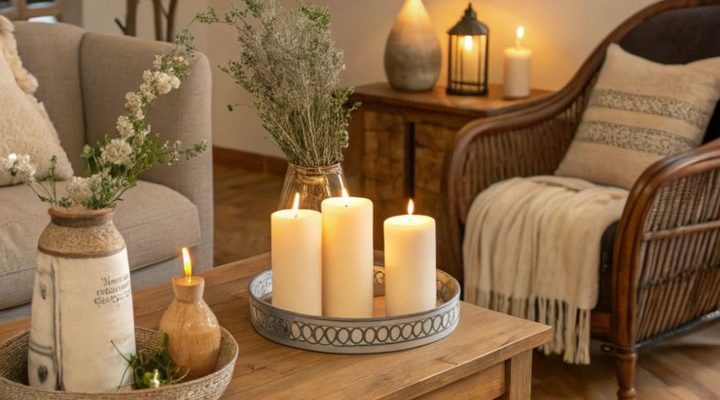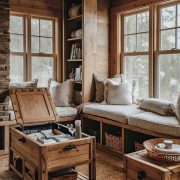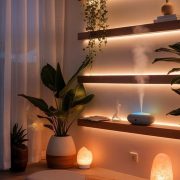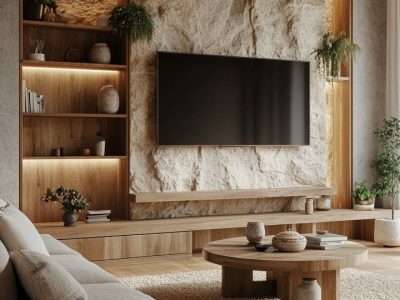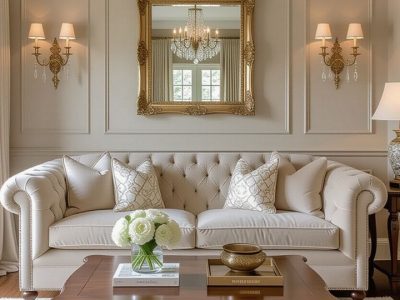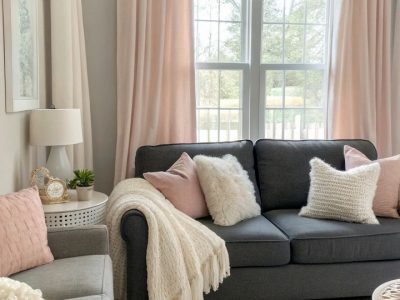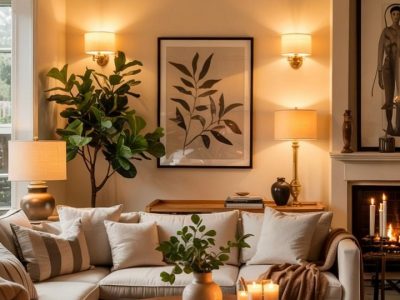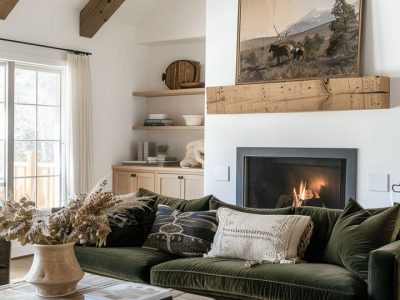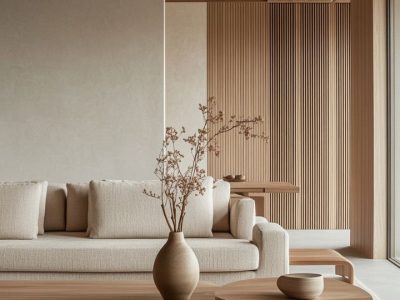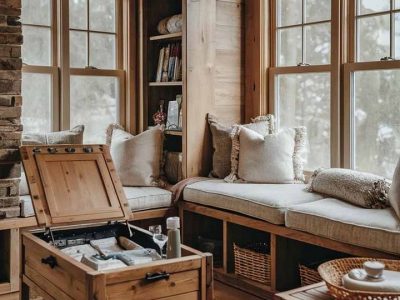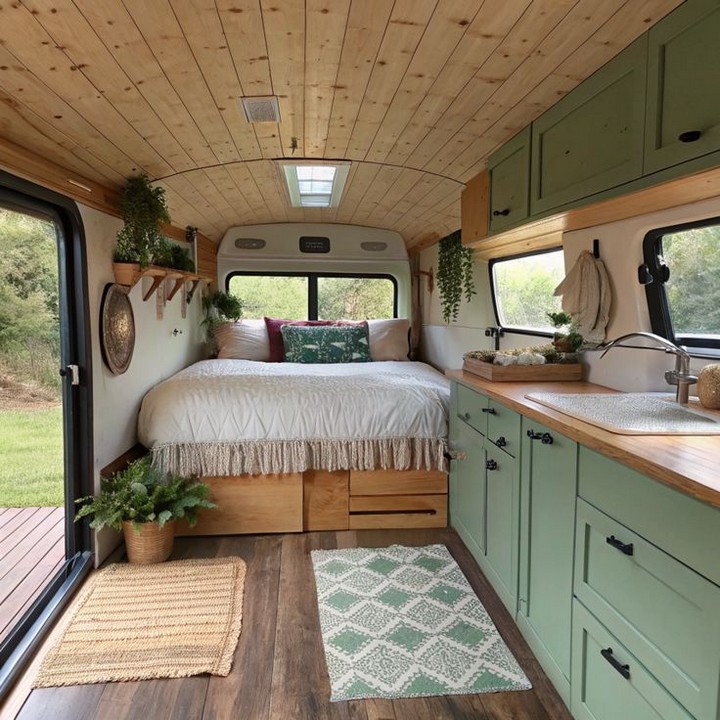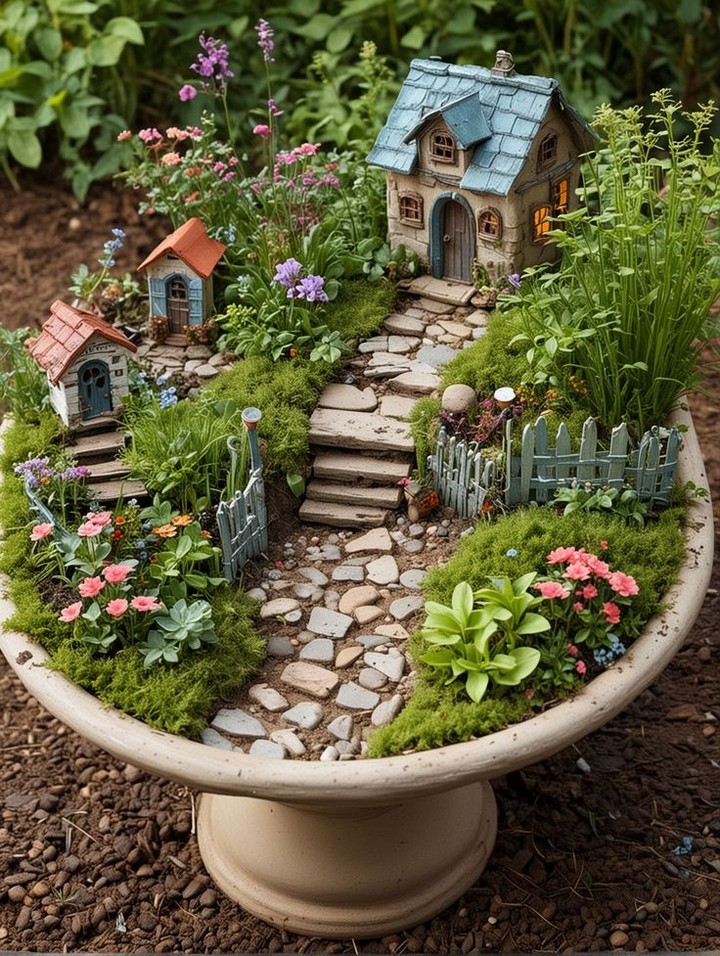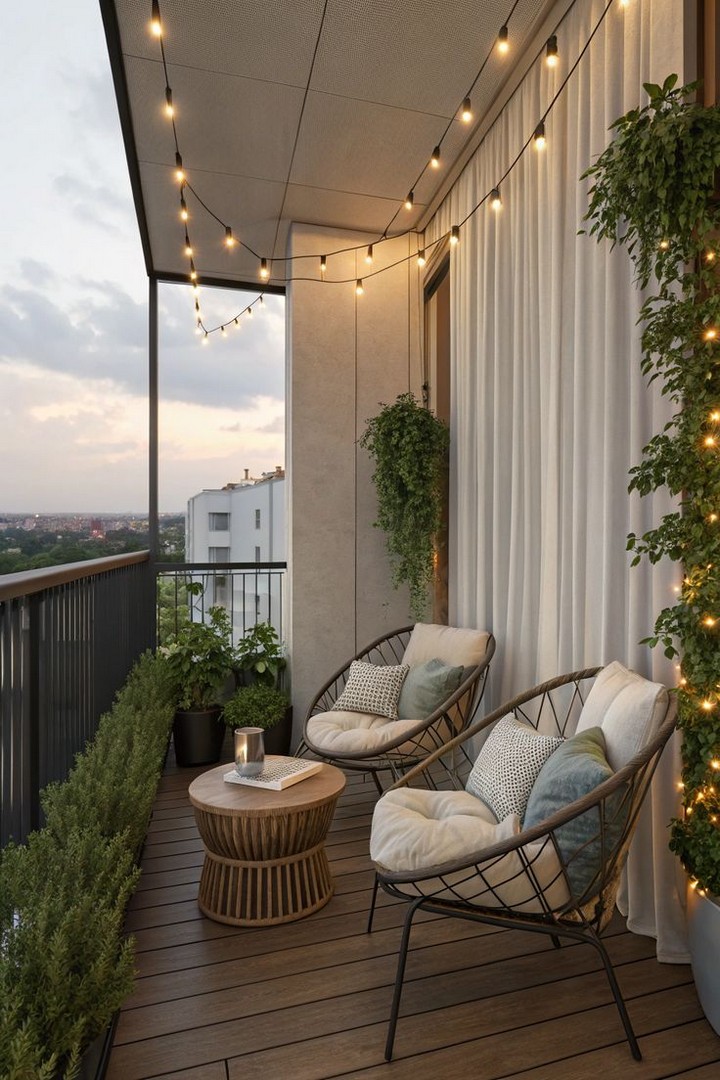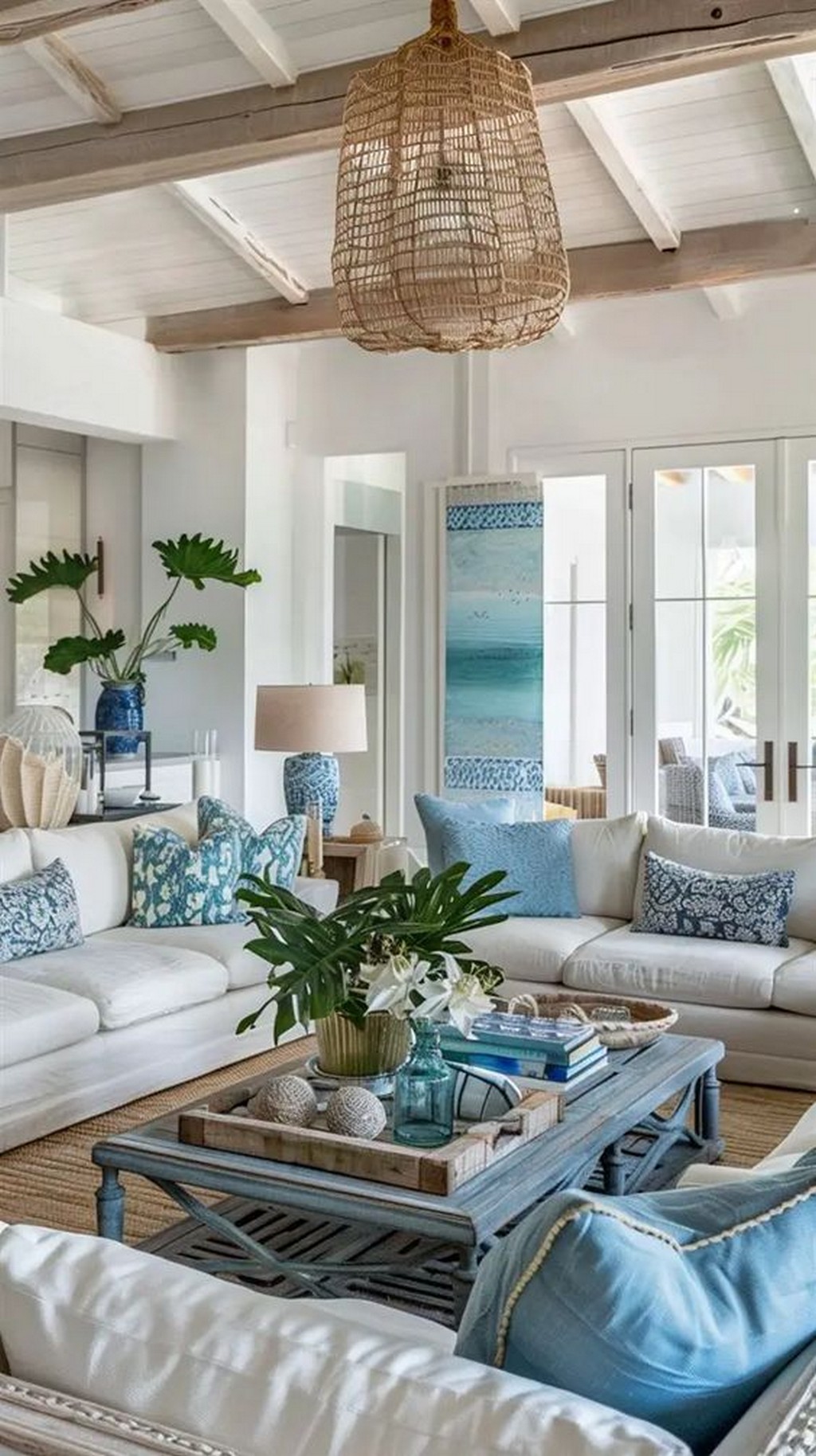In today’s fast-paced world, creating a serene and inviting living space has become more important than ever. Modern cozy living rooms with neutral tones offer the perfect balance between contemporary style and comfortable warmth. These versatile color palettes create timeless spaces that feel both sophisticated and welcoming, making them ideal for homeowners seeking a peaceful retreat from daily stress.
Neutral tones encompass a rich spectrum of colors including warm whites, soft beiges, gentle grays, earthy taupes, and subtle creams. When thoughtfully combined with modern design elements, these hues create living spaces that are both visually appealing and emotionally comforting. This comprehensive guide explores ten distinct approaches to designing modern cozy living rooms using neutral color schemes.
1. The Warm Minimalist Haven
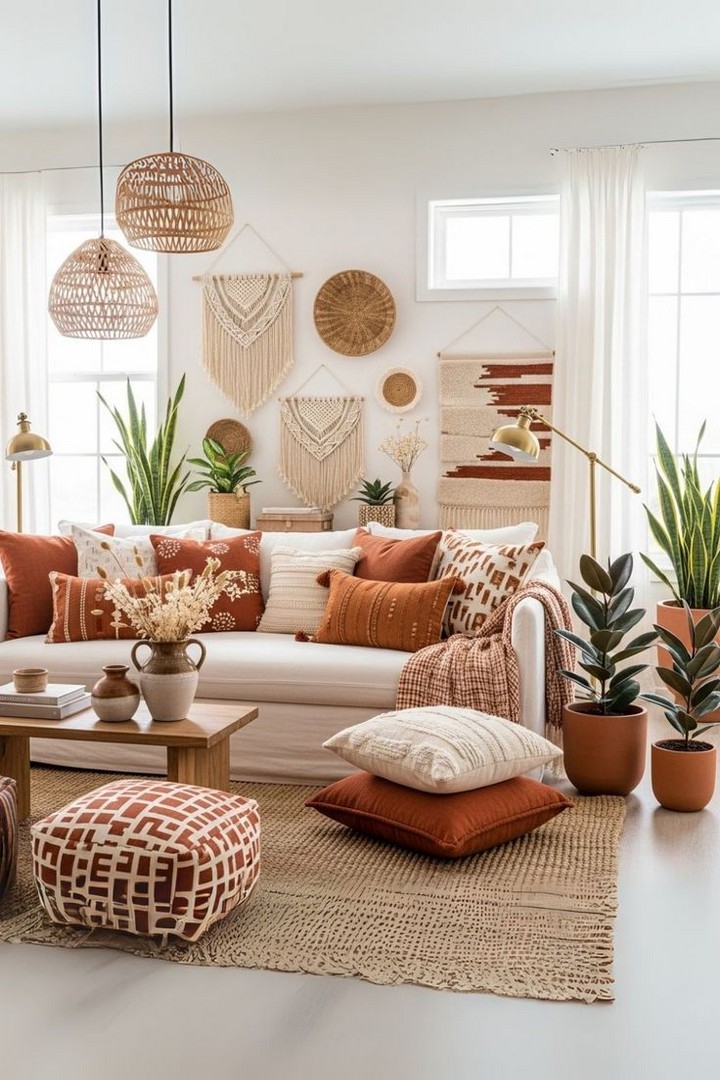
The warm minimalist approach combines the clean lines of contemporary design with cozy neutral elements that prevent the space from feeling sterile. This style focuses on quality over quantity, featuring carefully selected furniture pieces in warm beige and cream tones.
Key elements include a low-profile sectional sofa in oatmeal-colored fabric, paired with a natural wood coffee table that adds organic warmth. The walls should be painted in a soft white with warm undertones, such as Swiss Coffee or Ivory, which creates depth without overwhelming the space. Large floor-to-ceiling windows allow natural light to enhance the neutral palette throughout the day.
Texture plays a crucial role in this design approach. Incorporate a chunky knit throw blanket in cream or light gray, complemented by linen cushions in various neutral shades. A jute or wool area rug with subtle geometric patterns adds visual interest while maintaining the cohesive color scheme.
The lighting design should include warm-toned LED fixtures, such as brass pendant lights or ceramic table lamps with linen shades. These create a golden glow that enhances the cozy atmosphere during evening hours. Strategic placement of mirrors reflects natural light and makes the space feel larger while maintaining the minimalist aesthetic.
2. Scandinavian-Inspired Neutral Comfort
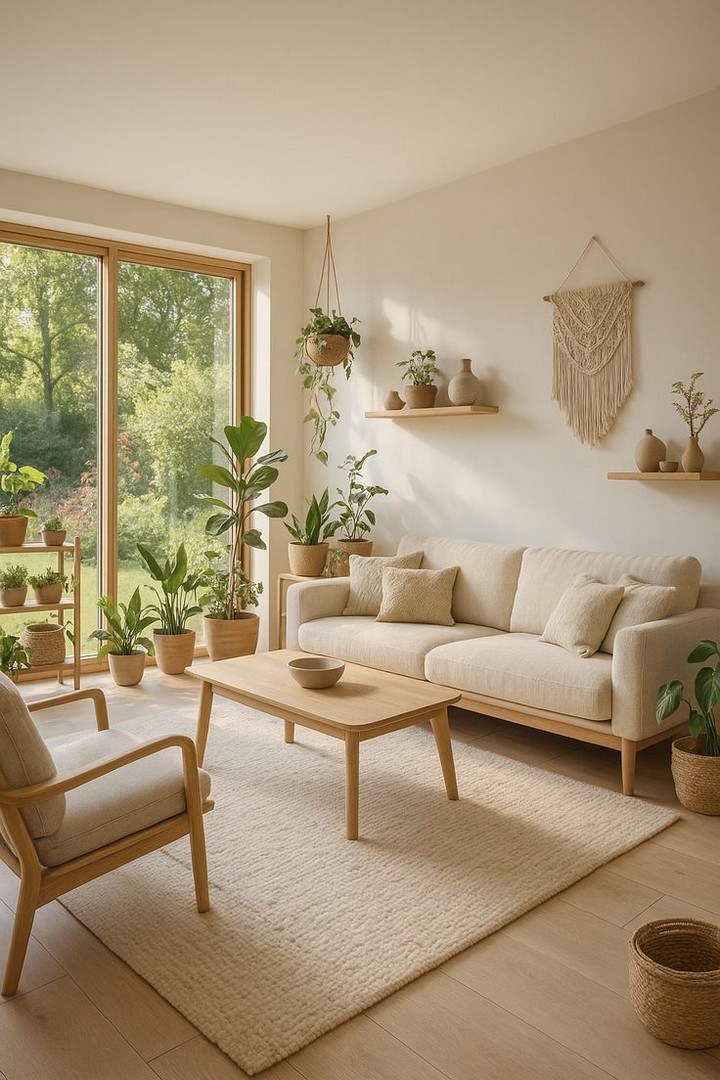
Scandinavian design philosophy emphasizes hygge – the Danish concept of cozy contentment. This approach to neutral living rooms focuses on creating spaces that promote relaxation and well-being through thoughtful use of natural materials and muted colors.
The foundation begins with light oak or birch hardwood floors, which provide a natural backdrop for the neutral color scheme. Walls painted in soft gray or warm white create a calming environment that doesn’t compete with the furniture or accessories.
Furniture selection should prioritize comfort and functionality. Choose a modular sofa system in light gray or beige that can be reconfigured as needed. Add a sheepskin throw and wool cushions in cream and soft gray tones. The coffee table should be made from light wood with clean, simple lines.
Natural elements are essential in Scandinavian design. Incorporate potted plants such as fiddle leaf figs or snake plants in ceramic planters with matte finishes. These green accents provide subtle color while improving air quality and connecting the space to nature.
Lighting should include multiple sources at different heights. Consider floor lamps with wooden bases and white fabric shades, paired with string lights or candles to create ambient lighting during darker months. The goal is to create a warm, inviting atmosphere that counters harsh winter conditions.
3. Rustic Modern Fusion
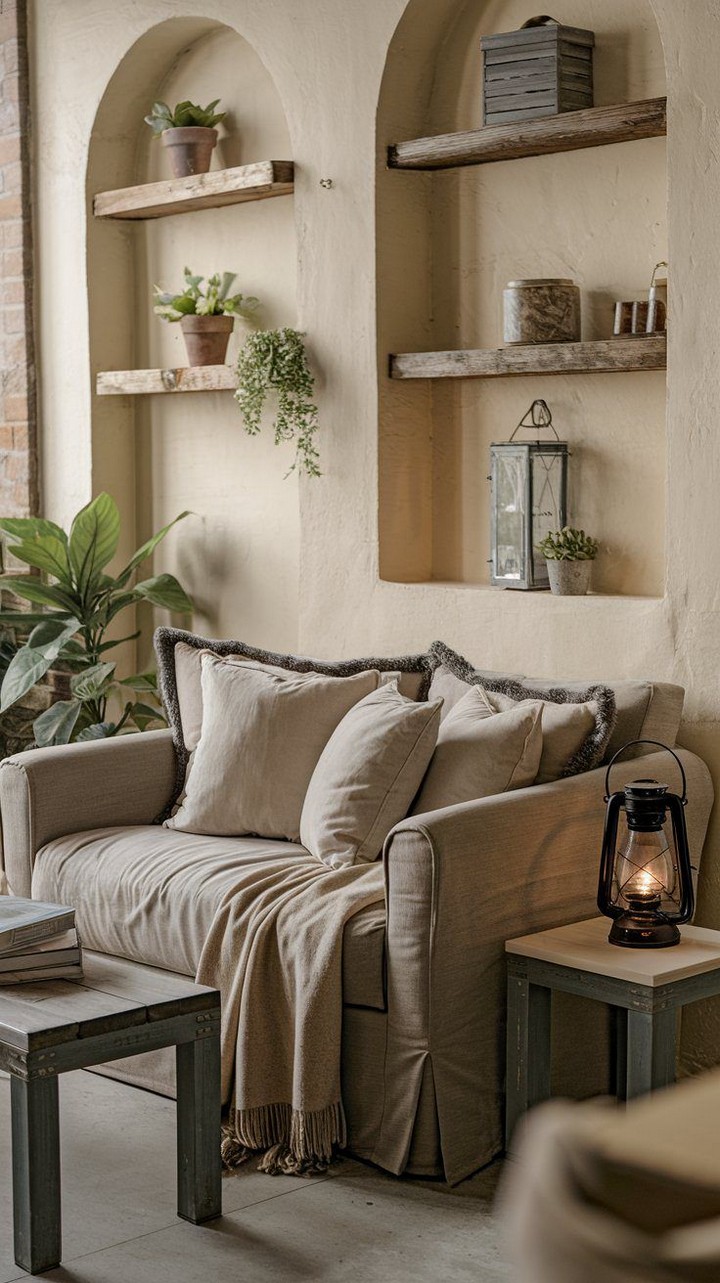
The rustic modern fusion approach combines contemporary design principles with natural, weathered elements that add character and warmth. This style works particularly well in homes with architectural features like exposed beams or stone fireplaces.
Start with a neutral base of warm gray walls, then introduce reclaimed wood elements such as a barn door coffee table or floating shelves made from weathered timber. These pieces add texture and visual interest while maintaining the neutral color palette.
Upholstered furniture should balance comfort with modern silhouettes. A large sectional sofa in charcoal or warm gray provides ample seating, while leather accent chairs in cognac or tan add warmth and sophistication. The contrast between soft fabrics and leather creates visual depth.
Incorporate natural stone elements through accessories like bookends, candle holders, or decorative bowls. A stone fireplace or accent wall serves as a stunning focal point while reinforcing the rustic theme.
Textiles play a crucial role in softening the harder elements. Layer different neutral textures through wool throws, linen curtains, and jute rugs. These materials add warmth and prevent the space from feeling too masculine or industrial.
4. Monochromatic Gray Elegance
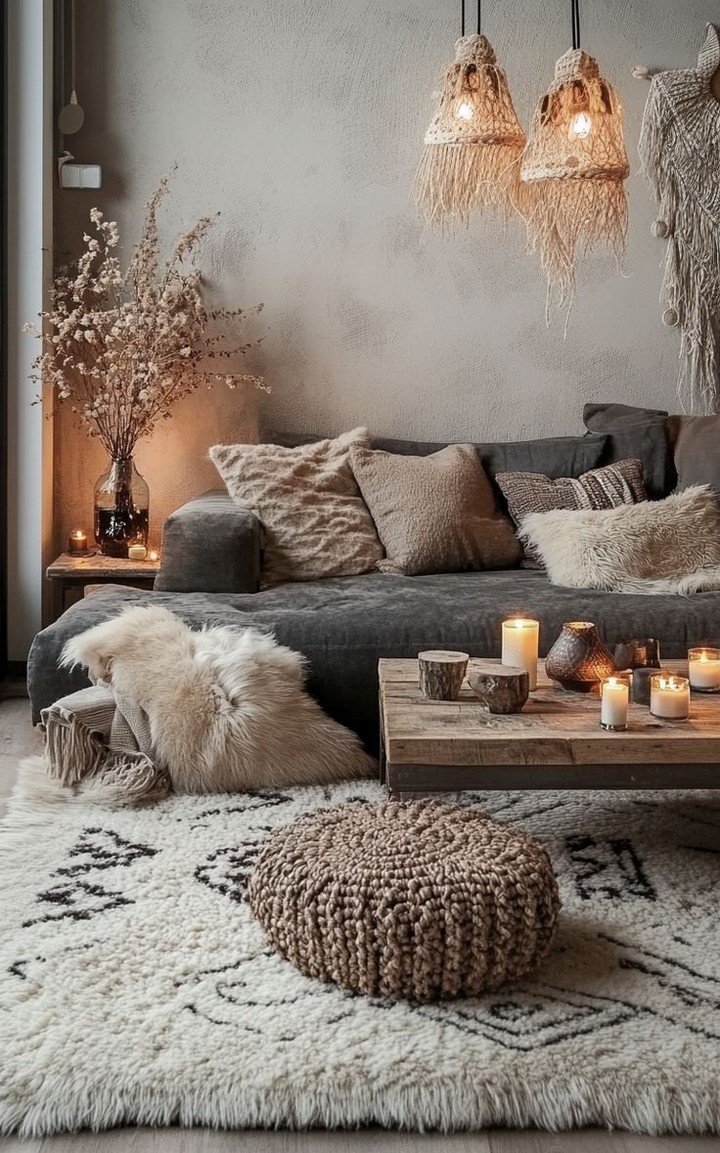
A monochromatic gray color scheme creates sophisticated living spaces that feel both modern and timeless. This approach uses various shades of gray, from light silver to deep charcoal, creating depth and visual interest without introducing additional colors.
Begin with walls painted in a medium gray tone that serves as the perfect backdrop for both lighter and darker furniture pieces. Hardwood floors in dark gray or painted white provide contrast and prevent the space from feeling too heavy.
The main seating area should feature a large sectional sofa in light gray fabric, complemented by darker gray accent chairs or ottomans. This creates visual hierarchy and ensures the space doesn’t become monotonous. Add metallic accents through silver or pewter accessories to introduce subtle sparkle and sophistication.
Texture becomes extremely important in monochromatic schemes. Incorporate various materials such as velvet cushions, faux fur throws, wool rugs, and silk curtains. These different textures catch light differently, creating visual interest and preventing the space from appearing flat.
Strategic use of patterns can enhance the design without breaking the color scheme. Consider geometric patterns in wallpaper, cushions, or artwork that use different shades of gray. These add visual movement while maintaining the cohesive color palette.
5. Earthy Taupe and Beige Sanctuary
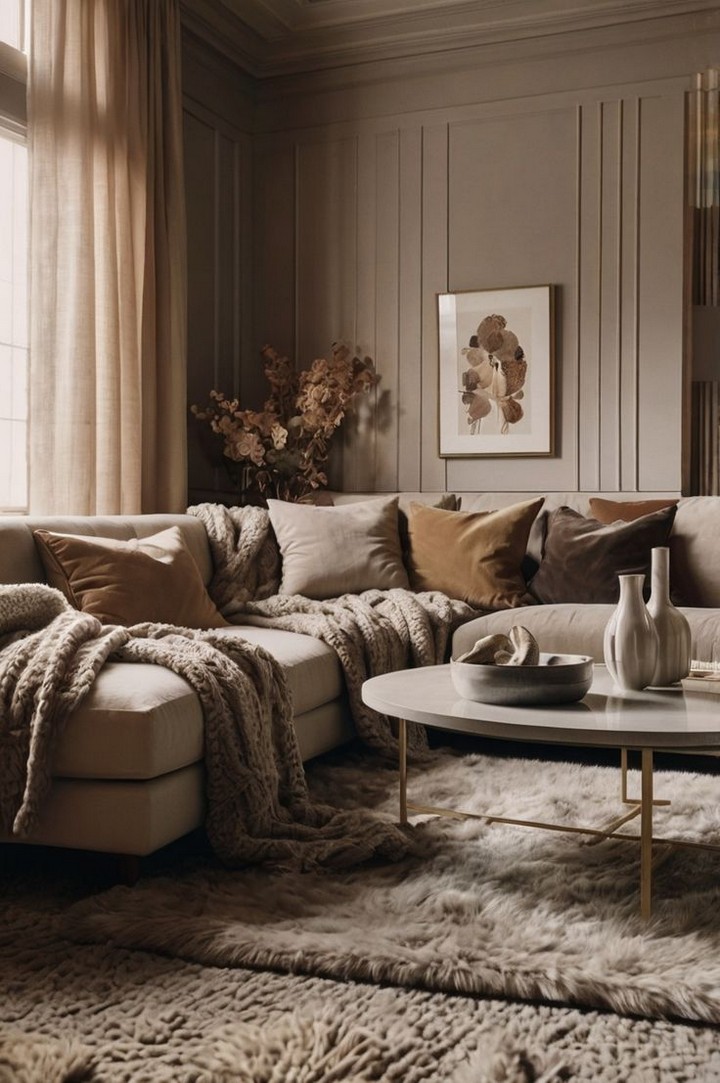
Earth-toned living rooms using taupe and beige create naturally calming environments that feel grounded and peaceful. These warm neutrals work particularly well in spaces with plenty of natural light, as they can appear rich and inviting rather than dull or lifeless.
Paint walls in a warm taupe shade that has subtle brown undertones. This creates a cocoon-like feeling that promotes relaxation. Pair this with cream or off-white ceiling and trim to maintain brightness and prevent the space from feeling enclosed.
Furniture selection should emphasize comfort and organic shapes. A curved sectional sofa in cream-colored fabric provides a soft focal point, while a coffee table made from natural wood adds warmth and texture. Accent chairs in deeper taupe or mushroom gray create visual depth.
Natural fiber rugs in jute, sisal, or wool add texture underfoot while reinforcing the earthy theme. Layer smaller area rugs in complementary neutral tones to define different seating areas within larger rooms.
Incorporate natural elements through potted plants, wooden decorative objects, and stone accessories. These elements reinforce the connection to nature that makes earth-toned spaces feel so peaceful and grounding.
6. Cream and White Cloud-Like Comfort
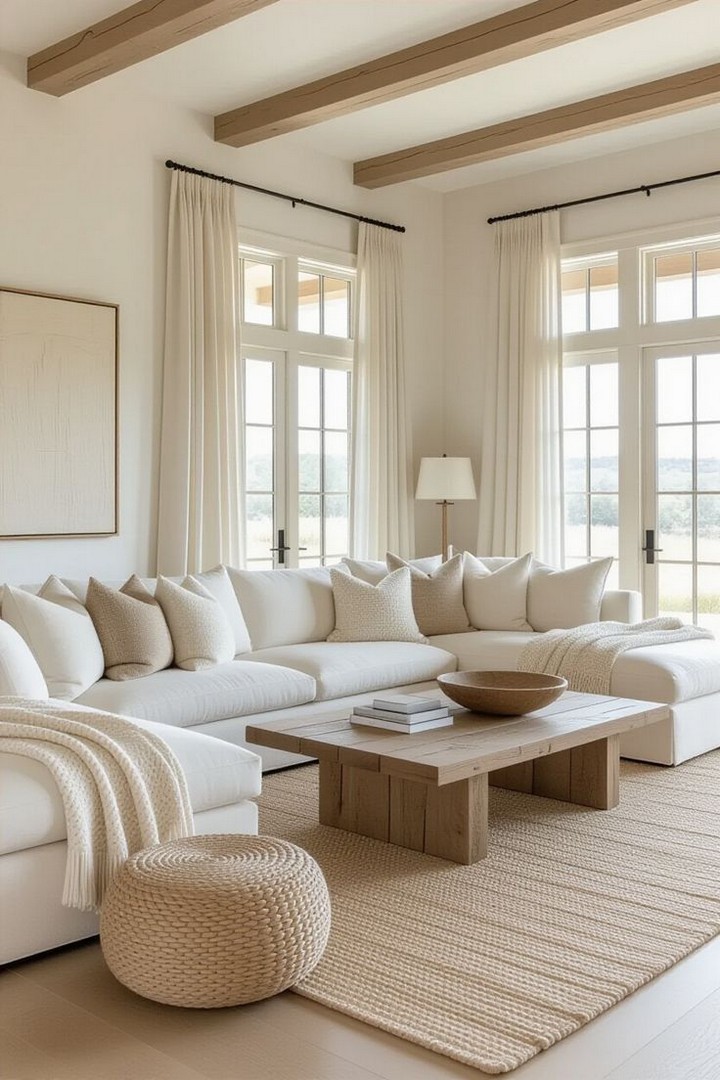
All-white and cream living rooms create ethereal, cloud-like environments that feel fresh, clean, and infinitely peaceful. This approach requires careful attention to texture and subtle tonal variations to prevent the space from appearing stark or sterile.
Use various shades of white and cream throughout the space, from pure white walls to ivory furniture and cream accessories. The key is layering different tones to create depth and visual interest. Consider warm white paint with subtle yellow undertones rather than stark, cool whites.
Furniture should emphasize soft, comfortable silhouettes. A white or cream sectional sofa with plush cushions serves as the centerpiece, surrounded by white accent chairs or ottomans. Choose pieces with slightly different undertones – some leaning toward yellow, others toward blue – to create subtle variation.
Texture is absolutely crucial in all-white spaces. Incorporate materials like bouclé fabric, cashmere throws, faux fur rugs, linen curtains, and cotton cushions. These different textures catch and reflect light in unique ways, creating visual interest without introducing color.
Natural light should be maximized through sheer curtains or bare windows. During evening hours, warm-toned lighting through table lamps, floor lamps, and candles creates a golden glow that prevents the white space from feeling cold or unwelcoming.
7. Industrial Chic with Soft Neutrals
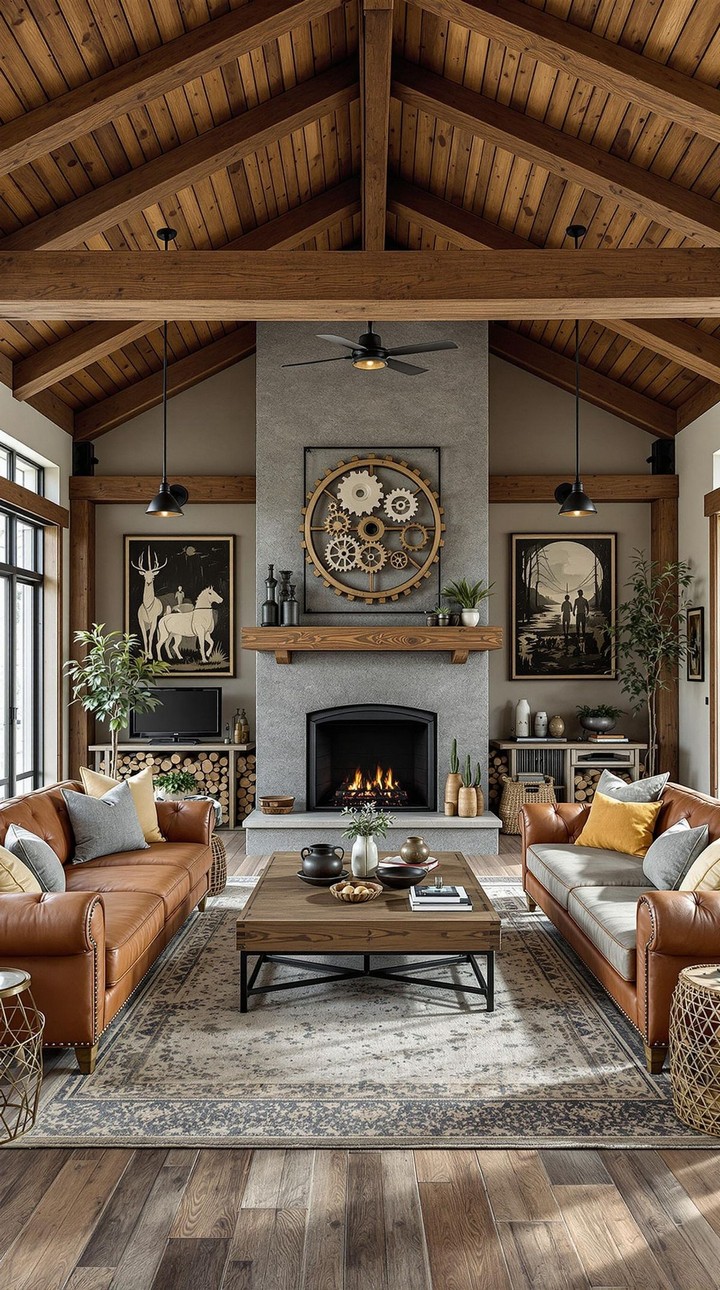
Industrial design elements paired with soft neutral colors create living spaces that feel both edgy and comfortable. This approach balances harder materials like metal and concrete with softer textiles and warm neutral tones.
Exposed brick walls painted in white or light gray provide an ideal backdrop for this style. If brick walls aren’t available, consider textured wallpaper or paint techniques that mimic industrial materials while maintaining the neutral color scheme.
Metal furniture pieces in black or dark gray provide structure and visual weight. A metal coffee table with a reclaimed wood top combines industrial elements with natural warmth. Pair this with a comfortable sectional sofa in light gray or beige to soften the overall appearance.
Lighting fixtures should emphasize industrial design through exposed bulbs, metal pendant lights, or track lighting systems. However, ensure these fixtures use warm-toned bulbs to maintain the cozy atmosphere essential for comfortable living.
Soft textiles balance the harder industrial elements. Use wool or cotton throws, leather cushions, and area rugs in neutral tones to add comfort and warmth. These elements prevent the space from feeling too cold or unwelcoming.
8. Transitional Elegance in Neutral Hues
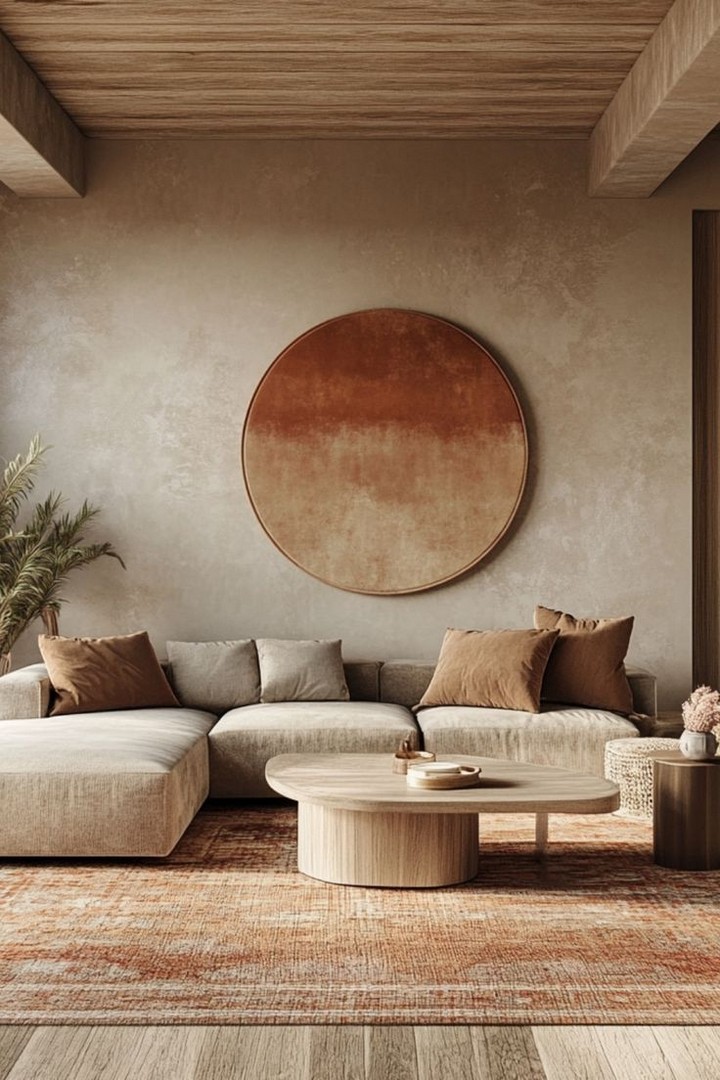
Transitional design combines traditional comfort with contemporary clean lines, making it perfect for neutral living rooms that need to accommodate various design preferences within a household. This approach creates timeless spaces that won’t feel dated in years to come.
Wall colors should be classic neutrals like warm gray, soft beige, or cream that work well with both traditional and contemporary furniture pieces. These colors provide a versatile backdrop that can accommodate changing décor preferences over time.
Furniture selection should balance classic comfort with modern functionality. A traditional-style sofa with clean lines in neutral fabric provides comfortable seating, while contemporary coffee tables and side tables add modern elements. Mix wood finishes in similar neutral tones to create cohesion.
Window treatments should be simple yet elegant. Consider roman shades or panel curtains in neutral linen or cotton fabrics. These provide privacy and light control while maintaining the clean, uncluttered appearance essential to transitional design.
Accessories should be carefully curated to avoid clutter while adding personality. Choose artwork, decorative objects, and plants in neutral tones that complement the overall color scheme without overwhelming the space.
9. Textural Neutral Paradise
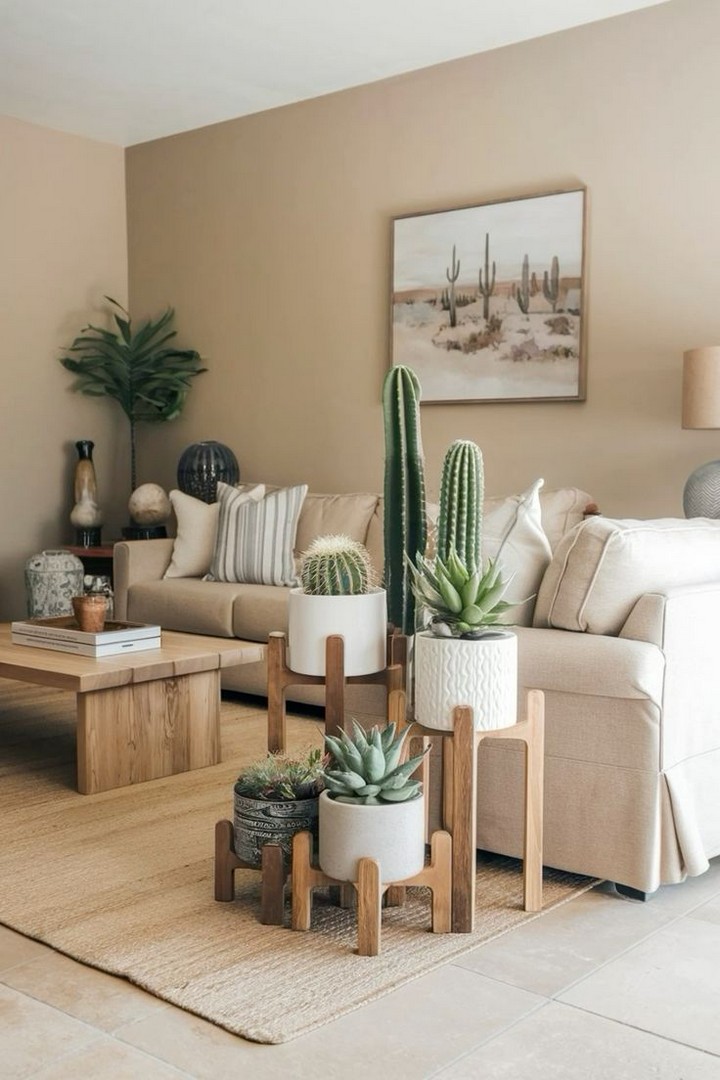
This approach emphasizes texture over color to create visual interest and comfort. By using various neutral-toned materials with different textures, you can create a rich, layered environment that feels both sophisticated and inviting.
Begin with a neutral base color for walls – perhaps a warm white or soft gray. Then layer different textures throughout the room. A jute rug provides rough texture underfoot, while a silk area rug in a seating area adds smoothness and luxury.
Upholstered furniture should incorporate various textures. Consider a sectional sofa in bouclé fabric paired with velvet accent chairs and a leather ottoman. These different materials create visual interest while maintaining the neutral color palette.
Wall treatments can add significant textural interest. Consider grasscloth wallpaper, wood paneling painted in neutral tones, or textured paint techniques that add dimension to flat surfaces.
Window treatments should also contribute to the textural scheme. Layer sheer curtains with heavier drapes, or use bamboo blinds paired with fabric panels. These combinations add visual depth while maintaining the neutral color scheme.
10. Organic Modern Neutral Living
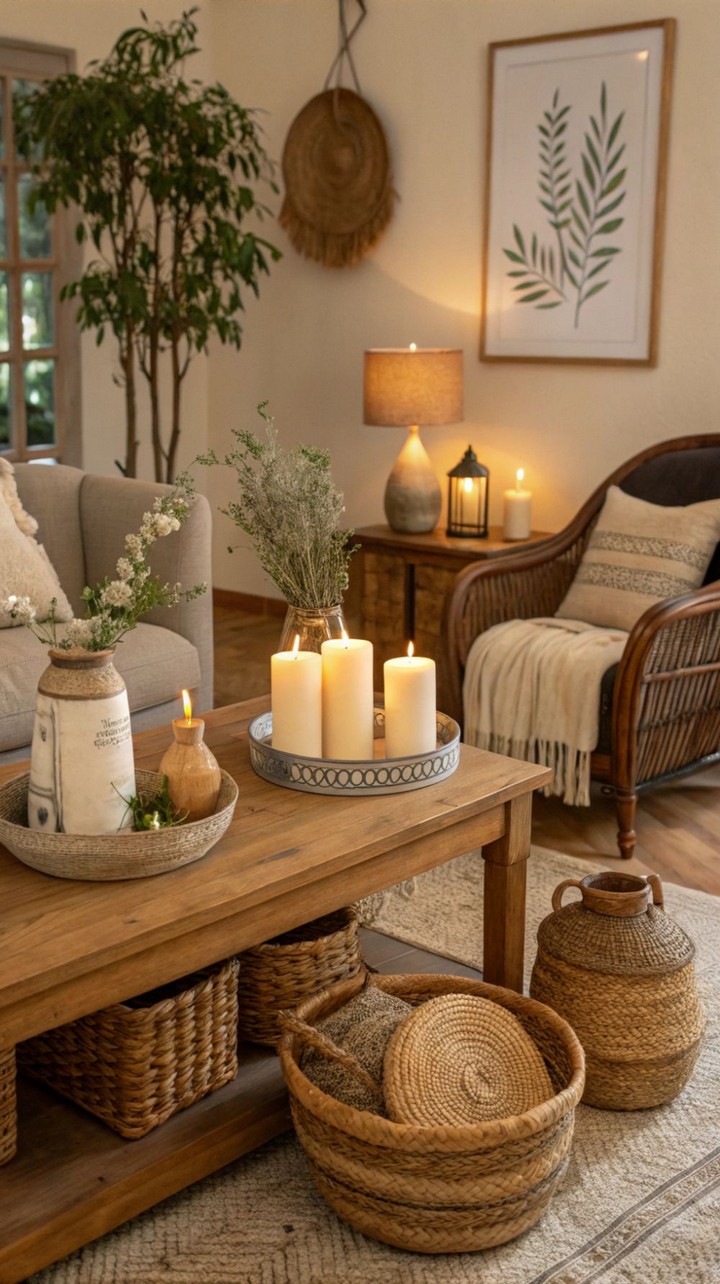
Organic modern design emphasizes natural shapes, materials, and forms while maintaining contemporary aesthetics. This approach to neutral living rooms creates spaces that feel connected to nature while remaining thoroughly modern.
Choose paint colors inspired by natural elements – think mushroom gray, stone beige, or sand cream. These colors provide a neutral backdrop that complements natural materials and organic shapes.
Furniture should emphasize curved lines and natural materials. A sectional sofa with rounded corners in cream or beige fabric provides comfortable seating, while a live-edge wood coffee table adds organic interest. Avoid sharp angles and geometric shapes in favor of flowing, natural forms.
Natural materials should be incorporated throughout the space. Consider stone accessories, wooden decorative objects, ceramic vases, and woven baskets. These elements reinforce the connection to nature that defines organic modern design.
Plants play a crucial role in organic modern spaces. Incorporate large potted plants like fiddle leaf figs or rubber trees, along with smaller plants in ceramic or woven planters. These living elements add subtle color while improving air quality and connecting the space to the natural world.

